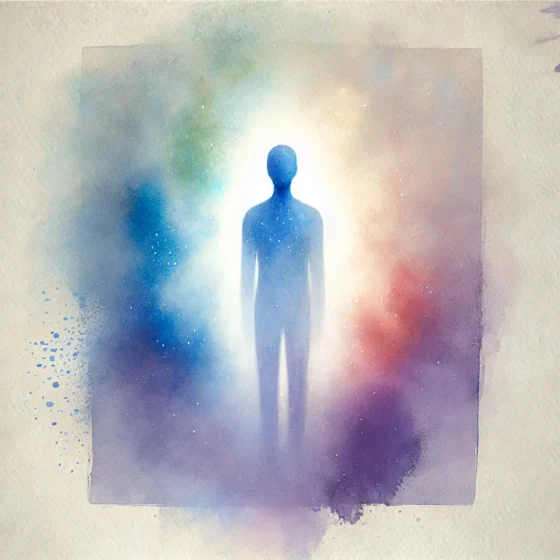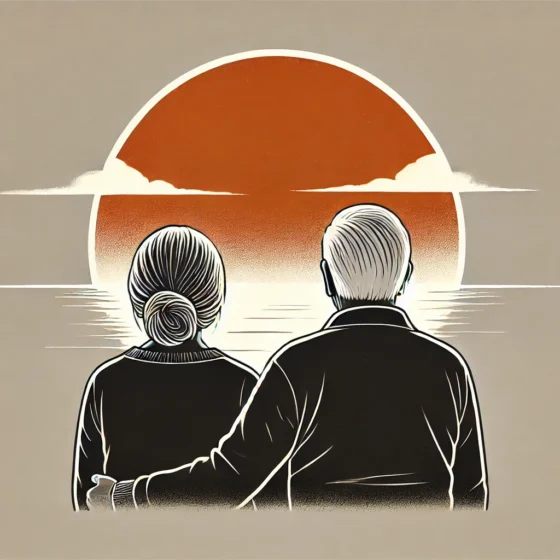In the intricate landscape of human behavior, the interplay between psychology and sex drive is a topic of profound significance. This complex relationship not only underpins many aspects of human intimacy but also influences libido, thereby affecting relationships and personal well-being. The mechanisms that govern sexual desire and arousal are shaped by a blend of biological, psychological, and sociocultural factors, where hormones like testosterone play a pivotal role. Understanding these dynamics is essential for unraveling the mysteries of female sex drive and the broader spectrum of sexual preferences and behaviors across genders.
This article delves into the multifaceted nature of sex drive, starting from the basic understanding of sexual desires, navigating through the biological and psychological drives, and exploring the impact of sociocultural influences. It further examines the interrelation of desire and arousal, providing insights into how these elements interact to shape individual experiences of sexuality. By dissecting these components, the article aims to offer a comprehensive overview of the factors that influence sex drive and thereby, inform the reader on the complexities of sexual health and intimacy.
Understanding Sexual Desires
Sexual desire, often viewed through various theoretical lenses, is a complex interplay of biological, psychological, and sociocultural factors. It is essential to explore its multifaceted nature to understand the nuances of human sexuality fully.
Definitions and Distinctions
Sexual desire is characterized as an emotion and motivational state, driven by an interest in sexual objects or activities, or a drive to engage in sexual behaviors. This subjective feeling state can be triggered by both internal and external cues and may result in overt sexual behavior. The distinction between spontaneous and responsive desire highlights the spectrum of sexual desire, which can be positive or negative and vary in intensity.
The understanding of sexual desire incorporates two primary frameworks: a biological framework, where desire is seen as an innate motivational force, and a sociocultural theory, where desire is conceptualized within a broader context. These frameworks provide insights into the dynamic nature of sexual desire, influenced by an array of factors ranging from evolutionary biology to societal norms.
Factors Influencing Sexual Desires
Several theories and research findings have shed light on the factors influencing sexual desires. Psychological theories suggest gender differences in human sexuality, predicting men’s higher approval of casual sex and promiscuity compared to women. Sociobiological approaches emphasize reproductive success, arguing that women’s greater parental investment leads to more selective mate choices. Neoanalytic theories point to the impact of maternal attachment and societal structures on gender-specific attitudes towards sex.
The sexual strategies theory and social learning theory further elaborate on the evolutionary and learned aspects of sexual behavior, highlighting the role of environmental and social norms in shaping sexual attitudes and preferences. Additionally, script theory and social role theory underscore the influence of societal expectations and conventions on sexual behaviors, with distinct scripts for male and female sexuality.
Biological aspects, such as hormones and neurotransmitters, play a significant role in sexual desire. Dopamine, serotonin, norapenephrine, and oxytocin are among the key chemicals involved in the arousal and satisfaction cycle, influencing the physiological underpinnings of desire. Furthermore, the concept of erotic plasticity suggests variability in sexual preferences and behaviors over time, influenced by situational, cultural, and social factors.
Sexual self-concept, encompassing feelings, beliefs, and perceptions about one’s sexual relationships, is a crucial component of sexual health and influences sexual behaviors. Factors affecting sexual self-concept include biological, psychological, and social elements, such as age, gender, body image, and the role of parents and media.
Physiological factors, mental health, self-esteem, body image, and contextual factors like life events and relationship dynamics also impact sex drive. Sexual-related factors, including the frequency of sexual activities, fantasy life, and new experiences, contribute to the complexity of sexual desires.
In summary, understanding sexual desires requires a comprehensive examination of the interplay between biological drives, psychological factors, and sociocultural influences. By exploring these dimensions, one can gain deeper insights into the complexities of human sexuality and the factors that shape sexual desires and behaviors.

Biological and Psychological Drives
Sexual behavior and desires are significantly influenced by a combination of biological and psychological factors. These elements interact in complex ways to shape individual sexual experiences and behaviors. This section explores the role of hormones, brain mechanisms, and the impact of genetics and evolutionary perspectives on sexual drives.
Role of Hormones
Hormones play a pivotal role in sexual development and reproduction. The adrenal glands and the gonads, which include the ovaries in females and testes in males, are the main producers of sex hormones. These hormones, including estrogen, progesterone, and testosterone, fluctuate throughout a person’s life, influenced by factors such as age, menstruation, pregnancy, menopause, stress, medications, and the environment.
Estrogen, known for its crucial role in reproductive and sexual development, is produced mainly in the ovaries but also in small amounts by the adrenal glands and fat cells. Progesterone, which stabilizes menstrual cycles and prepares the body for pregnancy, is produced by the ovaries, adrenal glands, and placenta. Testosterone, although primarily a male hormone, is present in lower amounts in females and affects fertility, sexual desire, menstruation, tissue and bone mass, and red blood cell production.
The interplay of these hormones significantly affects sexual desire and arousal. Higher levels of estrogen in the body promote vaginal lubrication and increase sexual desire, while increases in progesterone can reduce sexual desire. The role of testosterone in affecting female sex drive is complex and still under investigation.
Brain Mechanisms
Sexual desire, arousal, and orgasm are mediated by the interactions of the somatic and autonomic nervous systems at both central and peripheral levels. The central nervous system, including subcortical structures like the hypothalamus, brainstem, spinal cord, and various cortical brain areas, finely adjusts sexual behavior. The hypothalamus plays a crucial role in integrating endocrine, autonomic, and behavioral responses, including those related to sexual drive.
Dopaminergic and serotonergic systems in the brain are significant in regulating factors of sexual response, with dopamine being a key player in triggering sexual motivation. The reward system, consisting of the ventral tegmental area and its projections to the nucleus accumbens and prefrontal cortex, is essential in the experience of sexual drive and pleasure.
Genetics and Evolutionary Perspectives
Genetic factors contribute to individual differences in sexual behavior, with evidence from quantitative behavioral genetics and candidate gene association studies highlighting the genetic underpinnings of adolescent sexual behavior. These genetic influences may operate through various mechanisms, including pubertal development, testosterone levels, and dopaminergic systems. Additionally, genetic differences may be systematically associated with exposure to environments that influence sexual behavior, posing challenges for interpreting behavioral research.
The growing body of genetically-informed research has begun to challenge dominant assumptions regarding the etiology and sequelae of adolescent sexual behavior, indicating that understanding the genetic aspects of sexual behavior can provide profound implications for theory and research.
In summary, the biological and psychological drives behind sexual behavior are influenced by a complex interplay of hormones, brain mechanisms, and genetic factors. Understanding these elements offers insights into the intricacies of human sexuality and the diverse experiences of sexual desire and arousal.
Sociocultural Influences
Cultural Norms and Beliefs
Cultural norms significantly impact sexual behaviors and attitudes across different societies. In many cultures, gender-specific sexual norms are instilled from a young age, shaping individuals’ sexual behaviors and their interactions in relationships. For instance, in some African cultures, young men are socialized to view themselves as leaders in relationships, which influences their control over sexual interactions. This socialization supports a sexual double standard that promotes sexual freedom for men while restricting sexual behaviors for women. Such standards are also evident in other societies where premarital sexual intercourse is discouraged for women but is more acceptable for men.
Impact of Media and Society
The role of media in shaping sexual attitudes and behaviors is profound. Teenagers and young adults are exposed to a high volume of sexual content through television, movies, and the internet, which often portrays sexual relationships outside the context of marriage and emphasizes sex as risk-free. This portrayal can alter perceptions and expectations about sex, particularly among adolescents who are significant consumers of media content. For example, analyses show that most movies and television shows depict sexual activities positively, without addressing the consequences of unprotected sex. The influence of pornography, which often presents sex in an aggressive and objectifying manner, also contributes to shaping sexual norms and expectations, particularly among men.
Gender Differences and Expectations
Gender differences in sexual desires and behaviors are prominent, influenced heavily by societal expectations and norms. Men are often expected to have higher sexual desires and are more likely to engage in sexual activities compared to women, who are perceived to have more variable and sensitive sexual desires. This perception is reinforced by societal norms that encourage men to be sexually active while expecting women to be more reserved. The impact of these gendered expectations is significant, influencing everything from personal sexual health to broader social interactions and gender equality in sexual relationships.
By examining these sociocultural influences, it becomes evident that sexual desires and behaviors are not only a product of individual characteristics but are deeply embedded in social contexts and cultural teachings. These factors collectively contribute to the complex landscape of human sexuality, highlighting the need for a nuanced understanding of how cultural norms, media, and gender expectations shape sexual behaviors and attitudes.
Interrelation of Desire and Arousal
Understanding the complex interplay between sexual desire and arousal is crucial in the study of human sexuality. These two components, while often discussed in tandem, have distinct characteristics and impacts on sexual behavior and satisfaction. Through the insights provided by various studies and theoretical models, we can better comprehend how desire and arousal are intertwined and how they influence each other in the sexual response cycle.
Differences Between Desire and Arousal
Sexual desire, often referred to as libido, is primarily a psychological phenomenon, reflecting an individual’s baseline interest in sexual activities or their sexual appetite. It encompasses the mental aspect of sexuality, influenced more by the brain than the physical body. Conversely, sexual arousal pertains to the physiological responses to sexual stimuli, such as increased blood flow to the genitals, resulting in physical manifestations like vaginal lubrication and erection.
The distinction between these two aspects is critical because, for many individuals, arousal is a prerequisite for experiencing sexual desire. This phenomenon, known as responsive desire, suggests that physical arousal needs to occur first for the mental desire for sex to be felt. This concept challenges the traditional view that libido leads to physiological arousal.
How Desire Affects Arousal
The relationship between desire and arousal is not linear but rather cyclical and influenced by various factors including psychological, relational, and cultural elements. For instance, the expression of sexual desire, deeply rooted in evolutionary needs, is shaped by early childhood experiences and the observation of parental sexuality. These early impressions, combined with biological cues like pheromones and hormonal influences, contribute to the complex dynamics of desire and arousal.
Moreover, the circular model of sexual response, proposed by Rosemary Basson, highlights the significance of emotional closeness and attachment to a partner in enhancing sexual arousal and desire. This model suggests that intimacy and effective sexual stimulation lead to arousal, which in turn fuels desire, creating a feedback loop that enhances sexual satisfaction and relationship intimacy.
Cycle and Feedback Loop
The sexual response cycle, encompassing desire and arousal, varies significantly among individuals. It includes phases of excitement, plateau, orgasm, and resolution, with desire and arousal playing pivotal roles in navigating these stages. While traditionally conceptualized as a linear progression, recent models emphasize the cyclical and feedback-driven nature of the sexual response, particularly in women.
This feedback loop between desire and arousal is further complicated by factors such as arousal non-concordance, where physical signs of arousal may not align with subjective feelings of desire. Understanding this disconnect is essential, especially in addressing sexual disorders and enhancing sexual well-being.
In summary, the interrelation of desire and arousal is a multifaceted aspect of human sexuality, influenced by biological, psychological, and sociocultural factors. Recognizing the differences between these components and the dynamic cycle they create provides valuable insights into sexual behavior and the potential for addressing sexual health issues.

Conclusion
Throughout this exploration, we have delved into the multifaceted relationship between psychology and our sexual drive and desires, revealing this dynamic as a complex interplay of biological, psychological, and sociocultural forces. From the significant roles played by hormones and brain mechanisms to the compelling influences of cultural norms and media, each factor intricately shapes the spectrum of human sexual behavior. This comprehensive review underscores the critical importance of understanding these diverse elements to grasp fully the complexities underlying sexual health and intimacy. By untangling these connections, we offer valuable insights into the nuanced nature of human sexuality, encouraging a deeper appreciation for its profound impact on personal well-being and relationships.
The implications of this discussion extend far beyond academic interest, spotlighting the imperative for a more informed and empathetic approach to addressing issues related to sexual desire and health. As we recognize the varied influences shaping sexual desires and behaviors, it becomes clear that fostering a positive sexual self-concept requires acknowledging and embracing this diversity. Emphasizing the need for further research and open dialogue, this article aims to pave the way for more nuanced understanding and support within the realm of sexual health. In reflecting on the intricate web of factors influencing sexual drive, we echo the call for both individuals and professionals to adopt more inclusive and holistic perspectives on sexuality.
FAQs
What influences our sexual desire from a psychological perspective?
Psychological factors, including symptoms of anxiety like heart palpitations, rapid breathing, increased sweating, and symptoms of depression such as fatigue, decreased motivation, and negative thoughts, can significantly reduce sexual desire.
How does psychology connect to our sexual behaviors and desires?
Sexuality is not just about the act of sex itself but involves the physiological and psychological processes related to procreation and the pursuit of sexual pleasure. It encompasses a wide range of sexual behaviors, including one’s gender identity, sexual orientation, attitudes towards sex, and sexual activities.
Is our libido driven more by physical or psychological factors?
Libido, or sexual drive, is influenced by a complex interplay of biological, psychological, and social factors. The biological aspect includes the role of sex hormones like testosterone and estrogen, as well as neurotransmitters such as dopamine and oxytocin. However, libido can vary greatly among individuals, highlighting the influence of both physical and psychological elements.
What factors contribute to the physiological aspect of sex drive?
The physiological aspect of sex drive is influenced by a myriad of factors including hormones, an individual’s energy levels, overall health, societal norms, and emotional state. Furthermore, how one perceives their body and their memories of past positive sexual experiences also play critical roles in shaping sex drive and the normal sexual response for both men and women.











